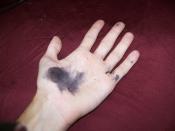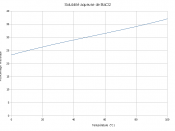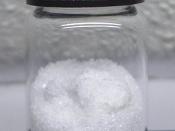Every step in this experiment has reasons behind its application. One determines the masses of the crucible and barium chloride hydrate for obvious data collection and calculation purposed. The heating of the sample slowly for 10 minutes is done to remove the water from the sample. A constant mass for the sample must be obtained so therefore it must be done slowly because if not you may loose mass from the sample. At the point where the crystalline solid changes to a powdery solid the sample must cool and then have the mass taken of it. This process to repeated to obtain a constant mass. When one obtains a constant mass the water from the barium chloride hydrate has been completely removed. The anhydrous salt is placed in distilled water for filtering and bonding purposes. The 1.0M silver nitrate solution is placed in with the distilled water and anhydrous salt so a chemical reaction can occur.
The new solution is heated to be sure that the chemical reaction is complete and all new bonds have been formed. The solution is then filtered through the filter paper to separate the precipitate from the solution itself. This is done to separate the precipitate from the solution so the mass of that may be obtained.
My conclusion based on this experiment is that the barium chloride hydrate was dehydrated and then re-hydrated with distilled water. That solution was added to a solution of silver nitrate and then heated. A chemical reaction occurred that caused a precipitate to form in the solution and settle at the bottom. This precipitate was most likely silver from the silver nitrate. This solution was then filtered to get the precipitate by itself. The masses were obtained along the way and then used to calculate the moles of silver...



Alright
Not a bad start, but needs to be a bit more detailed, nice for reference.
0 out of 0 people found this comment useful.